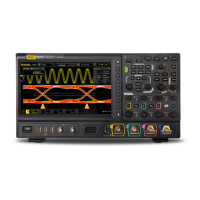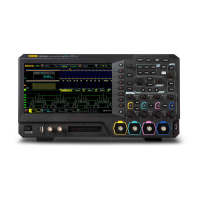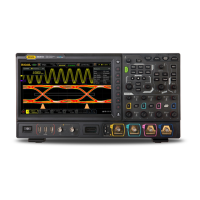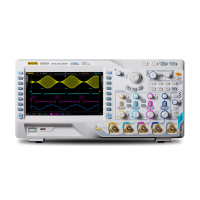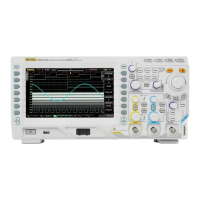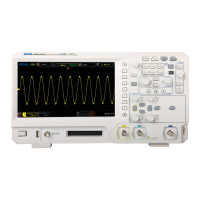Chapter 6 MATH and Measurement RIGOL
MSO1000Z/DS1000Z User’s Guide 6-25
Wherein,
is the
th point being measured,
is the number of points being
measured.
13. Overshoot: the ratio of the difference of the maximum value and top value of
the waveform to the amplitude value.
14. Preshoot: the ratio of the difference of the minimum value and base value of
the waveform to the amplitude value.
15. Variance: the average of the sum of the squares for the difference between the
amplitude value of each waveform point and the waveform average value on the
whole waveform or on the gating area. The variance reflects the fluctuation
degree of the waveform. The calculation formula is as follows:
2
=1
(- )
n
i
Vamp(i) Average
Variance=
n
∑
(6-3)
Wherein,
is the amplitude of the
th poin,
is the waveform
average value,
is the number of points being measured.
Other Parameters
1. +Rate: divide the difference of the upper value and lower value on the
rising edge by the corresponding time.
2. -Rate: divide the difference of the lower value and upper value on the
falling edge by the corresponding time.
3. Area: the area of the whole waveform within the screen and the unit is
Vs. The area meadured above the zero reference (namely the vertical offset) is
positive and the area measured below the zero reference is negative. The area
measured is the algebraic sum of the area of the whole waveform within the
screen.
4.
Period Area: the area of the first period of waveform on the screen and
the unit is Vs. The area above the zero reference (namely the vertical offset) is
positive and the area below the zero reference is negative. The area measured
is the algeraic sum of the area of the whole period waveform.
Note: When the waveform on the screen is less than a period, the period area
measured is 0.
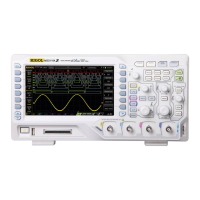
